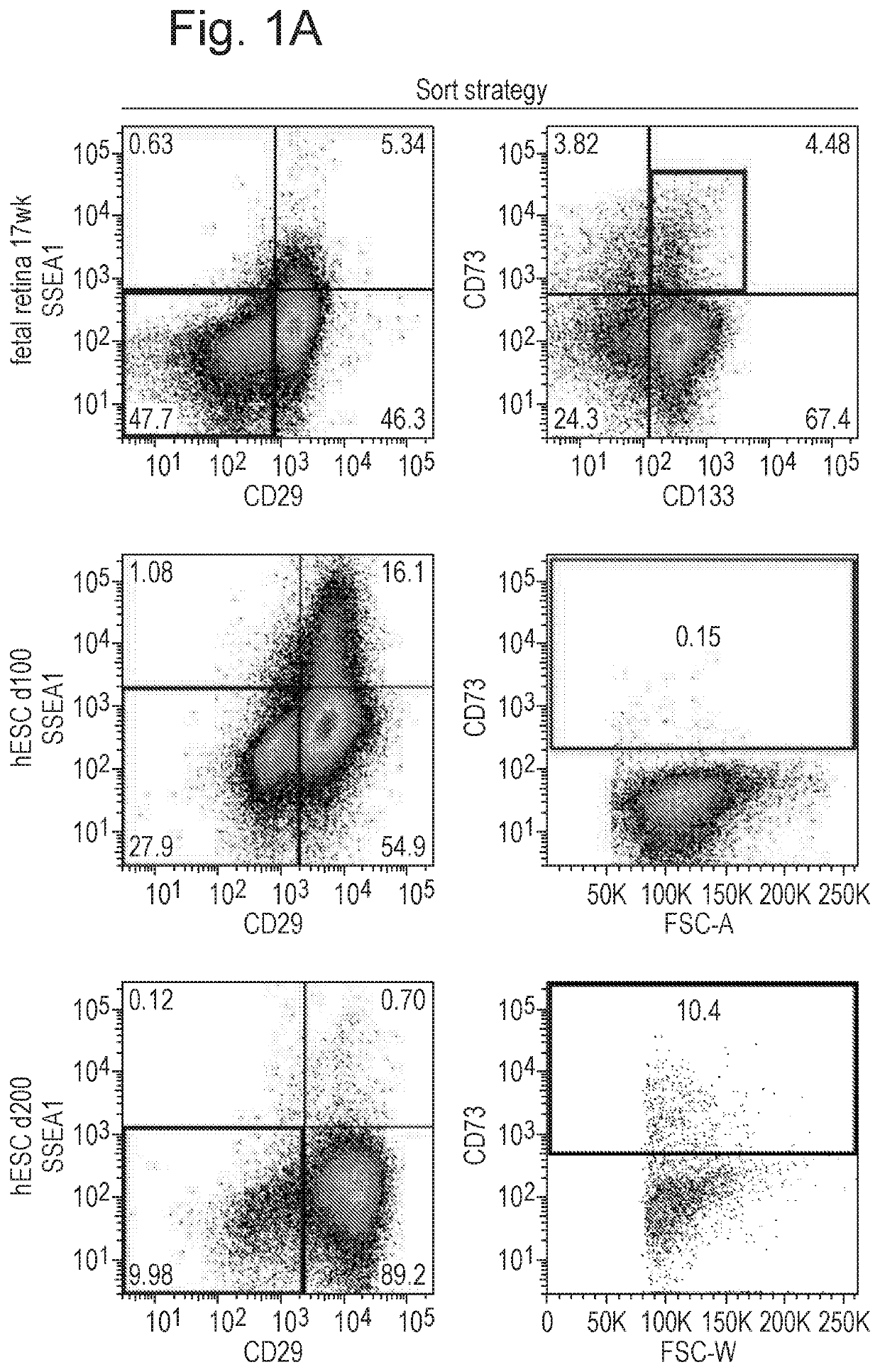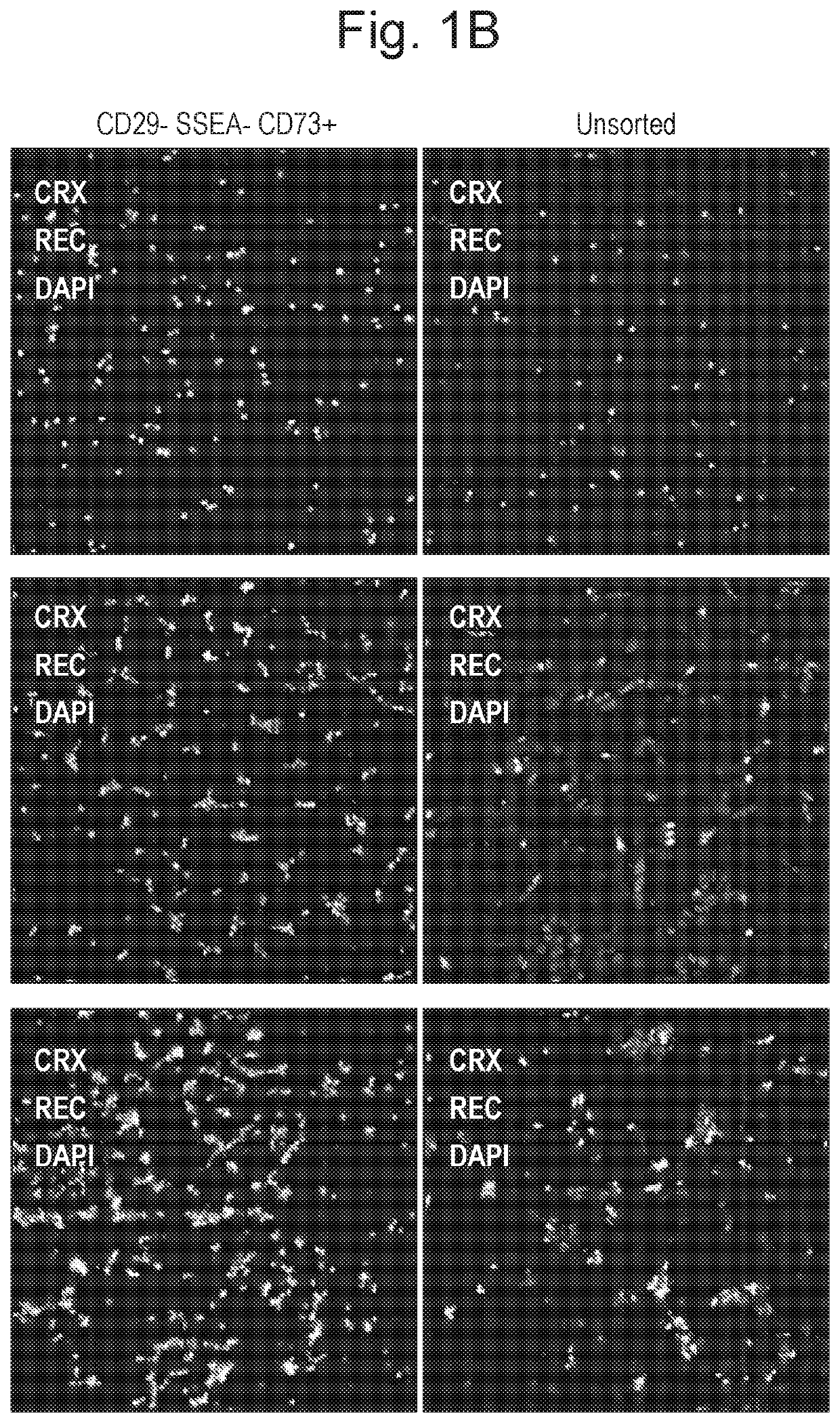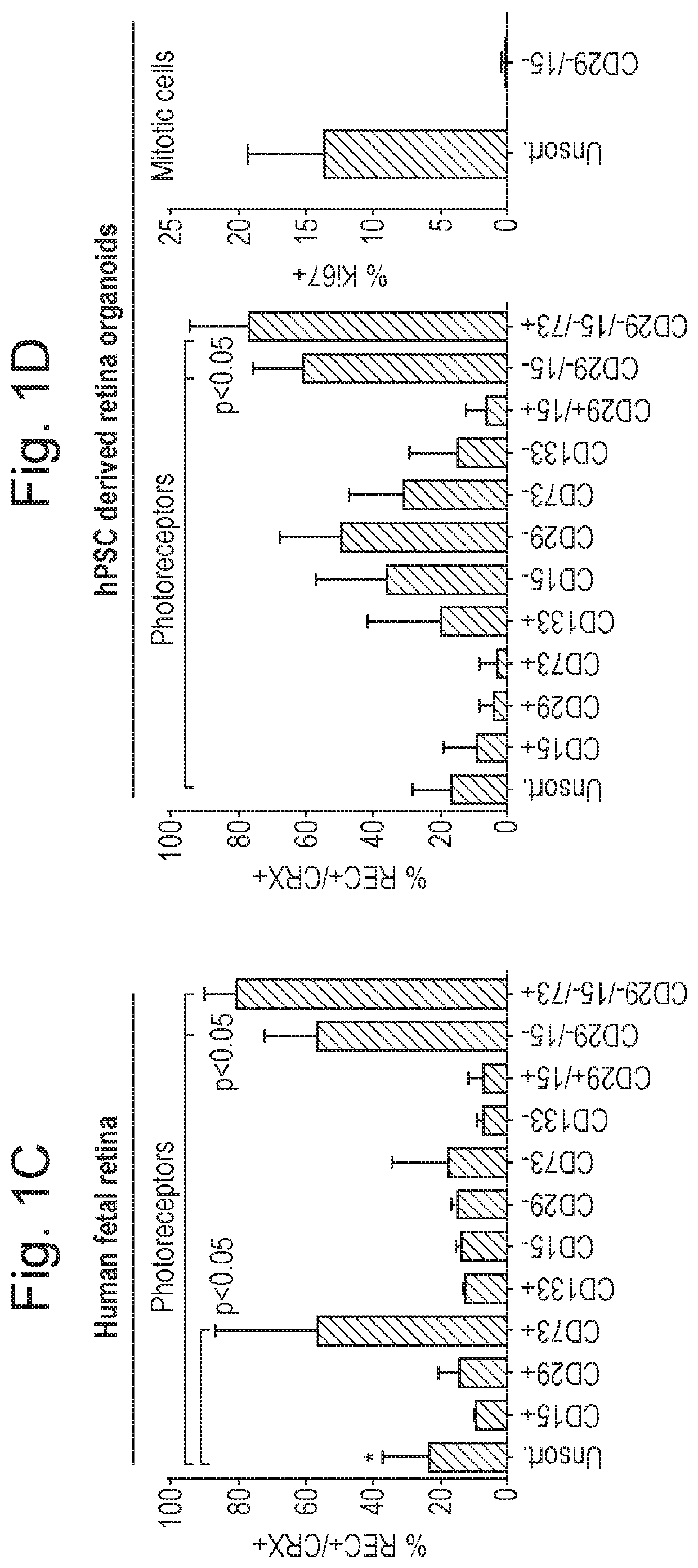Biomarkers for photoreceptor cells
a technology of photoreceptor cells and biomarkers, which is applied in the field of identification of photoreceptors or cone photoreceptors in cell populations, can solve the problems of slowing down disease progression, not cure the condition or reverse the effect, and affecting the use of the condition, etc., and achieves the effects of good manufacturing practice compatibility, wide applicability and ease of us
- Summary
- Abstract
- Description
- Claims
- Application Information
AI Technical Summary
Benefits of technology
Problems solved by technology
Method used
Image
Examples
example 1
[0067]Photoreceptor Identification
[0068]Methods
[0069]Animals
[0070]Experimental mice were kept in University College London animal facilities and all experiments were conducted in agreement with the Animals (Scientific Procedures) Act 1986 and the Association for Research in Vision and Ophthalmology Statement for the Use of Animals in Ophthalmic and Vision Research. C57Bl / 6J, and C3H / HeNCrl (RD1; Pde6brdl / rdl) recipient mice at 3 weeks of age at the time of transplantation were obtained from Charles Rivers laboratory.
[0071]Human Pluripotent Stem Cell Culture
[0072]All pluripotent stem cells were maintained as previously described for hESC cultures. Human embryonic stem cells and induced pluripotent cells were either cultured on a feeder layer of irradiated mouse embryonic fibroblasts (MEFs) in embryonic stem cell medium (DMEM / F12 (1:1), 20% knockout serum replacement, 0.1 mM mercaptoethanol, 1 mM L-glutamine, MEM nonessential amino acids, and 4 ng / mL FGF2) or under feeder-free conditi...
example 2
[0106]Cone Photoreceptor Identification
[0107]Methods
[0108]Human Foetal Tissue Preparation
[0109]Human foetal eyes were obtained from the Wellcome Trust and Medical Research Council Funded Human Developmental Biology Resource (http: / / www.hdbr.org / ). Human adult eyes were obtained from Moorfields BioBank.
[0110]Human Foetal Retinal Explant Cultures
[0111]Human foetal eyes were dissected in sterile conditions and all ocular tissue was removed in order to obtain retina. Intact human foetal retina were cultured free floating in 12 well plates with retinal differentiation media (RDM) containing DMEM-F12, Glutamax, 1×N2, 1×B27 neural supplements (Invitrogen), 10% FBS (Invitrogen) and 1.5× penicillin / streptomycin (Invitrogen). Cell culture media was changed every 2 days.
[0112]iPSC Maintenance and Retinal Differentiation
[0113]Human iPSCs were cultured in 6 well plates on gelatin with irradiated mouse embryonic fibroblast layer (IRR MEFs; GlobalStem; 150,000 IRR MEFs per well) and passaged using...
PUM
| Property | Measurement | Unit |
|---|---|---|
| temperature | aaaaa | aaaaa |
| thick | aaaaa | aaaaa |
| temperature | aaaaa | aaaaa |
Abstract
Description
Claims
Application Information
 Login to View More
Login to View More - R&D
- Intellectual Property
- Life Sciences
- Materials
- Tech Scout
- Unparalleled Data Quality
- Higher Quality Content
- 60% Fewer Hallucinations
Browse by: Latest US Patents, China's latest patents, Technical Efficacy Thesaurus, Application Domain, Technology Topic, Popular Technical Reports.
© 2025 PatSnap. All rights reserved.Legal|Privacy policy|Modern Slavery Act Transparency Statement|Sitemap|About US| Contact US: help@patsnap.com



